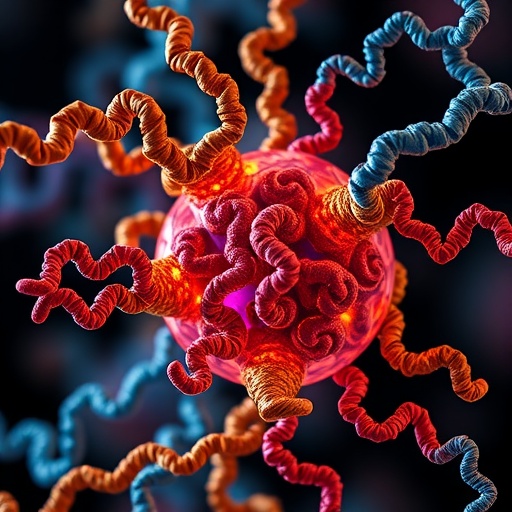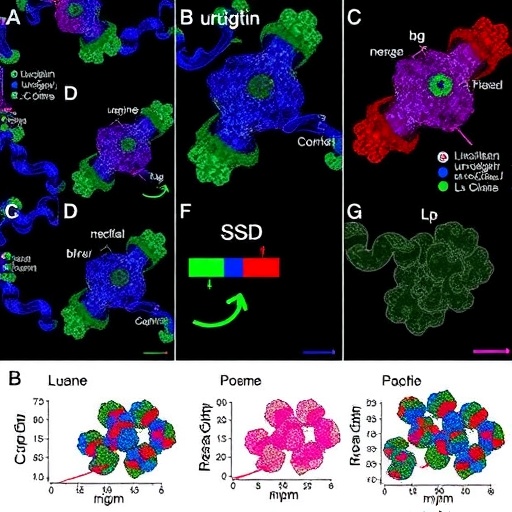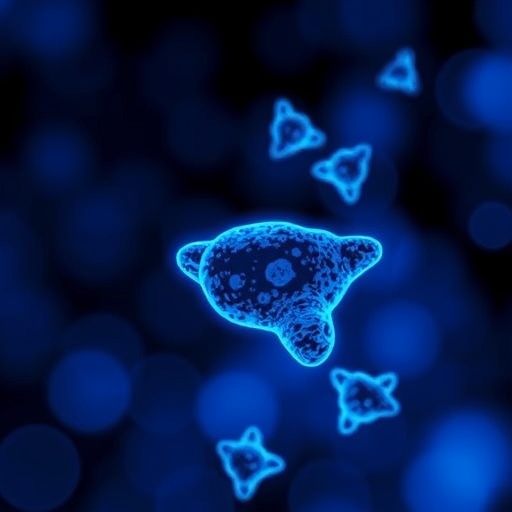
In the relentless pursuit to understand the enigmatic nature of cancer, scientists continue to unravel the intricate web of cancer stem-like cells (CSCs) that drive tumor growth, therapy resistance, and metastasis. A groundbreaking study published in BMC Cancer has delivered new insights into the metabolic and proteostatic landscapes of CSCs, shedding light on their unique protein dynamics and mitochondrial activities that diverge significantly from the broader tumor cell population. This research not only deepens our comprehension of CSC biology but also suggests novel avenues for targeting these elusive cells to enhance cancer treatment efficacy.
Cancer stem-like cells represent a distinct subset within tumors, defined by their remarkable ability to self-renew and sustain long-term growth. Unlike the majority of tumor cells that often proliferate rapidly, CSCs tend to adopt a quiescent or slow-cycling state, making them notoriously resistant to conventional therapies such as chemotherapy and radiation. Identifying CSCs accurately has long challenged oncologists, given their heterogeneity and overlapping markers with non-stem tumor cells. One functional characteristic that has emerged in recent years is the relative paucity of proteasomal activity in CSCs, which implicates altered protein turnover and homeostasis in sustaining their stem-like state.
The researchers focused their investigation on FaDu cells, a well-established model of oropharyngeal squamous cell carcinoma, introducing an unstable fluorescent reporter molecule to assay proteasomal activity dynamically. This approach allowed them to distinguish cells with low proteasome function, hypothesizing these as candidate CSCs. Furthermore, they evaluated the relationship between proteasomal activity and aldehyde dehydrogenase (ALDH) enzyme activity, a canonical marker for CSCs across multiple cancer types. ALDH high-expressing cells are known for their enhanced stemness and tumorigenic capacity, positioning this enzyme as a pivotal element in CSC biology.
.adsslot_MXnd84VxPz{width:728px !important;height:90px !important;}
@media(max-width:1199px){ .adsslot_MXnd84VxPz{width:468px !important;height:60px !important;}
}
@media(max-width:767px){ .adsslot_MXnd84VxPz{width:320px !important;height:50px !important;}
}
ADVERTISEMENT
Strikingly, the study revealed a robust association between cells exhibiting low proteasomal activity and those expressing high ALDH activity. This dual-marker strategy paints a more nuanced portrait of CSCs, indicating that proteasome-low, ALDH-high populations may embody a core stem-like compartment within the tumor. Moreover, these cells displayed a distinct metabolic phenotype characterized by elevated mitochondrial membrane potential, which is a surrogate for mitochondrial activity and health, alongside notably reduced glucose transporter expression. This finding challenges the classic Warburg effect paradigm in cancer cells, where aerobic glycolysis predominates; instead, the CSCs appear to leverage oxidative phosphorylation pathways preferentially.
This metabolic dichotomy implies that CSCs may rely less on the rapid glucose uptake and fermentation that fuel most tumor cells, instead sustaining energy demands through more efficient mitochondrial respiration. Such a metabolic shift could underpin their quiescent phenotype and resistance to therapies that target proliferative pathways or glycolytic metabolism. The reduced glucose transporter levels further endorse this energy utilization model, hinting at alterations in nutrient uptake and metabolic flexibility that supporters CSC survival under stressful conditions.
Further deepening the molecular characterization, the proteasome-low CSCs exhibited diminished protein synthesis rates. Reduced translation may serve multiple functions, including the lowering of proteotoxic stress and conserving cellular resources, which align well with the low turnover demands of stem-like cells. This attenuated protein synthesis complements the diminished proteasome activity, collectively suggesting a tightly regulated proteostasis network essential for CSC maintenance.
To expand their insights beyond the FaDu cell model, the researchers delved into publicly accessible gene expression datasets profiling ALDH-positive CSCs from different cancer types. These analyses corroborated their experimental data, revealing common alterations in pathways regulating proteostasis. Notably, a significant downregulation of major chaperone proteins such as Hsp70 and Hsp90 was consistently observed in ALDH-positive cells. Molecular chaperones typically facilitate correct protein folding and prevent aggregation, so their reduced expression in CSCs may reflect a reduced proteome turnover and an adaptation to stress conditions that favors stemness.
In tandem with changes in chaperones, the gene encoding ubiquitin carboxyl-terminal hydrolase L5 (UCHL5), a component of the proteasomal degradation machinery, demonstrated decreased expression levels. This finding adds another layer to the emerging picture of proteostasis modulation in CSCs, where selective down-tuning of ubiquitin-proteasome system components could be integral to their unique biology.
The confluence of these molecular and metabolic features outlines a CSC phenotype that is distinct from the bulk tumor cells: proteasome-low, ALDH-high, metabolically reliant on mitochondrial respiration rather than glycolysis, and exhibiting reduced protein synthesis. This phenotype not only provides an enhanced understanding of CSC biology but also highlights potential biomarkers and therapeutic targets. By exploiting these vulnerabilities—such as the altered chaperone landscape or metabolic dependencies—novel strategies may be developed to selectively eradicate CSCs and overcome tumor resistance mechanisms.
This research underscores the heterogeneity of tumors at the functional level, where protein dynamics and metabolic zoning carve out specialized niches for cancer stem cells. The preferential usage of mitochondrial oxidative phosphorylation over glycolysis in CSCs contrasts with the broad targeting strategies that primarily focus on highly proliferative tumor fractions. Consequently, therapies designed with the metabolic plasticity and proteostasis signatures of CSCs in mind may significantly enhance treatment responses.
Moreover, the study invites a reevaluation of proteostasis pathways in cancer, shifting some focus from global proteasome inhibition to more tailored modulation of ubiquitin ligases, deubiquitinases, and molecular chaperones implicated in CSC maintenance. Targeting these components could disrupt the delicate balance CSCs maintain to preserve their stemness and survival advantage.
This enhanced molecular understanding may also enable better diagnostic tools, allowing clinicians to identify and monitor CSC populations in tumors more precisely, guiding personalized treatment regimens. The integration of proteasome activity assays with ALDH markers and metabolic profiling could become a standard in cancer stem cell diagnostics, aiding in the stratification of patient risk and therapy responsiveness.
The implications of this study resonate beyond oropharyngeal squamous cell carcinoma, as the mechanisms outlined appear to be conserved across different tumor types based on gene expression analyses. This universality increases the translational potential of these findings, paving the way for broad-spectrum anti-CSC therapies.
In summary, this landmark research advances the frontier of cancer stem cell biology by intricately linking heterogeneous protein dynamics with mitochondrial function and glucose metabolism. It challenges entrenched assumptions regarding CSC energetics and proteostasis, opening doors for innovative interventions that target the root of tumor persistence and relapse—the elusive cancer stem cell.
As cancer research continues to evolve, studies like this propel the field closer to therapies that can effectively eradicate the most resilient tumor cells. The path forward involves integrating metabolic and proteostatic vulnerabilities unique to CSCs, ultimately striving for durable cancer remission and improved patient outcomes.
Subject of Research: Cancer stem-like cell biology focusing on proteasomal activity, mitochondrial function, glucose metabolism, and proteostasis in cancer stem cells.
Article Title: Heterogeneous protein dynamics links to mitochondrial activity, glucose transporter, and ALDH cancer stem cell properties
Article References:
Krkoška, M., Tylichová, Z., Zatloukalová, P. et al. Heterogeneous protein dynamics links to mitochondrial activity, glucose transporter, and ALDH cancer stem cell properties. BMC Cancer 25, 1085 (2025). https://doi.org/10.1186/s12885-025-14460-x
Image Credits: Scienmag.com
DOI: https://doi.org/10.1186/s12885-025-14460-x
Tags: cancer stem-like cells researchFaDu cells in cancer researchheterogeneity of tumor cell populationsmetabolic pathways in cancer stem-like cellsmitochondrial dynamics in cancernovel cancer treatment strategiesprotein dynamics in tumor biologyproteostasis in cancerquiescent state of cancer stem cellsstemness in cancer biologytargeting cancer stem cells for treatmenttherapy resistance in cancer stem cells





